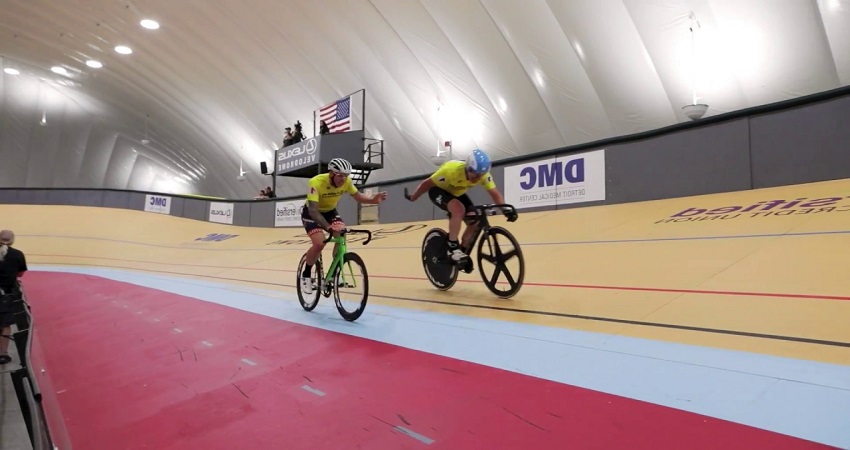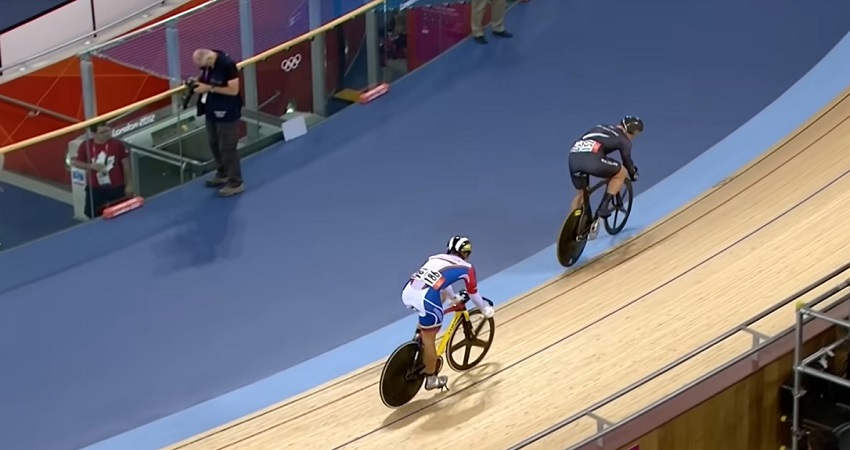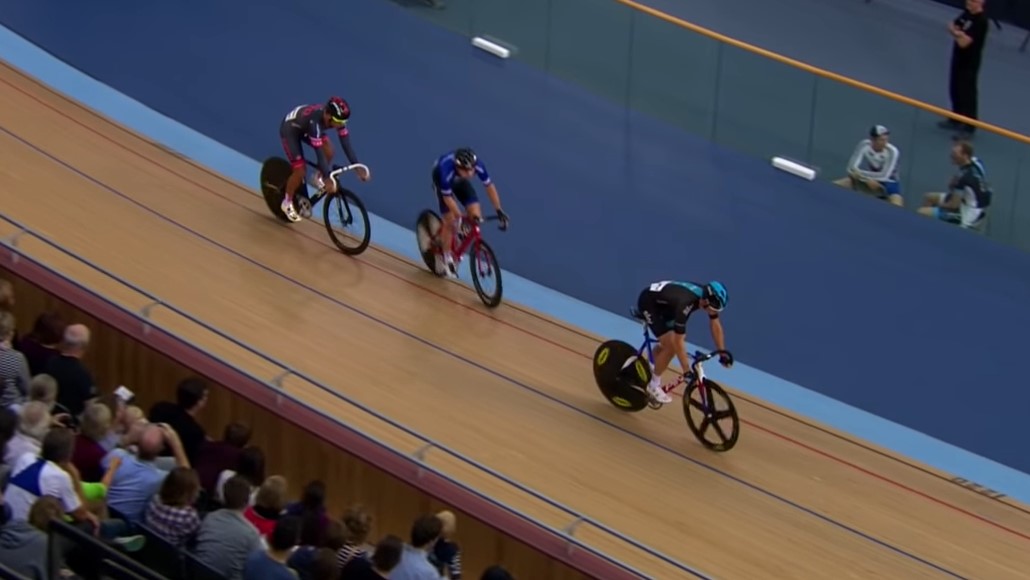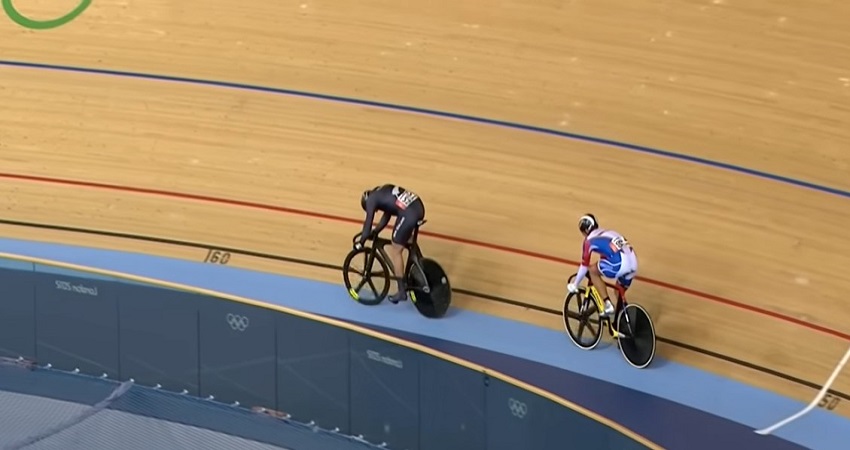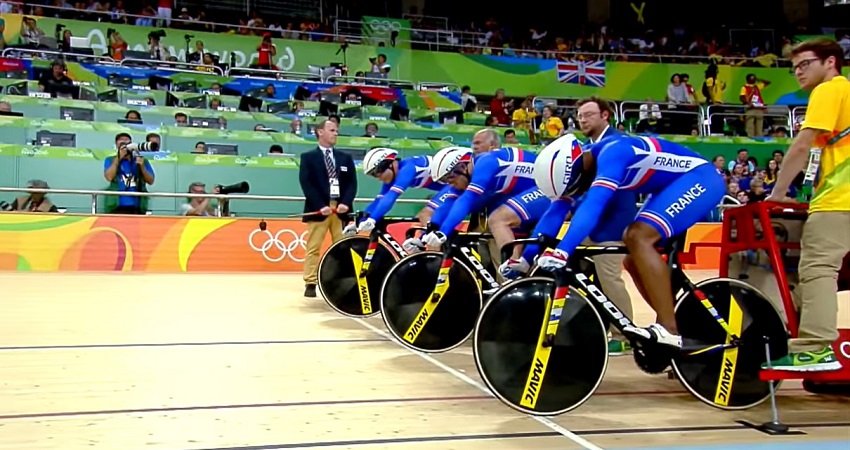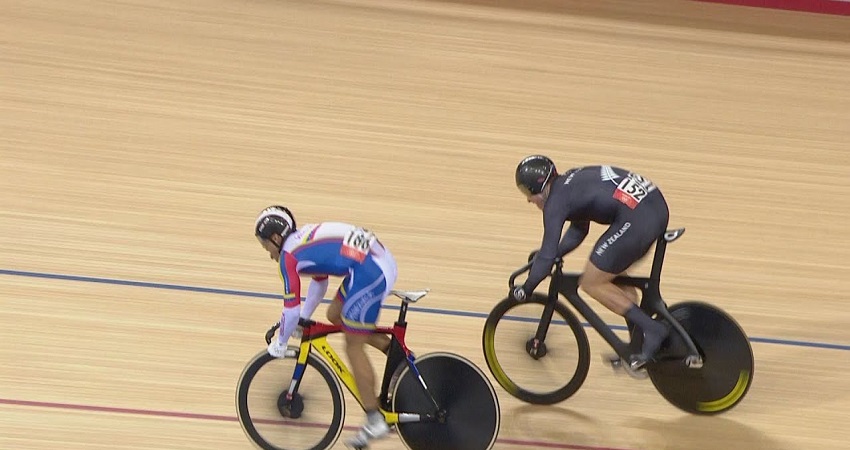
Velodrome bikes do not have gears because they are designed for high-speed racing on a smooth track. This lack of gears allows riders to maintain a constant speed and maximum power output, resulting in improved performance.
Without the need to shift gears, cyclists can focus entirely on their pedaling technique and maintaining their speed on the track. Additionally, a single gear setup reduces the weight and complexity of the bike, making it more nimble and responsive.
The absence of gears also eliminates the risk of mechanical failure or shifting errors during a race, ensuring a seamless and efficient riding experience. As a result, velodrome bikes are purposefully designed without gears to optimize speed, power, and overall performance on the track.
Why Velodrome Bikes Are Gearless
In the intense and fast-paced world of velodrome cycling, where milliseconds can make all the difference, it is surprising to discover that velodrome bikes are gearless. Why would top athletes forgo the benefits of gears in their pursuit of speed? In this article, we explore the reasons behind the design choice of gearless velodrome bikes.
Design For Speed
Velodrome bikes are meticulously engineered to maximize speed and forgo any unnecessary weight or friction. The absence of gears is a deliberate choice to eliminate drag and ensure a streamlined design. By removing the need for multiple gears, velodrome bikes can achieve a sleek, minimalist frame that cuts through the air with minimal resistance.
Optimal Power Transfer
In the velodrome, power transfer is paramount. Riders need smooth and efficient energy transfer from their muscles to the bike’s wheels. The gearless design allows for direct power transmission, minimizing any loss due to mechanical inefficiencies. With each pedal stroke, all the energy is efficiently transferred to the rear wheel, propelling the bike forward with incredible force.
Simplicity And Reliability
Velodrome racing demands precision and reliability. Gears introduce complexity and potential points of failure. By eliminating gears, velodrome bikes become simpler machines with fewer components that could malfunction. This simplicity ensures that riders can focus on their performance, without worrying about gear changes or mechanical issues.
Additionally, gearless bikes require less maintenance, allowing athletes to spend more time training and perfecting their techniques. In the heat of competition, having a reliable and low-maintenance bike can be a significant advantage.
In conclusion, velodrome bikes are gearless for a reason. Their streamlined design, along with the optimal power transfer and increased reliability, enables cyclists to achieve maximum speed on the velodrome track. By choosing simplicity and efficiency over gears, velodrome cyclists can fully unleash their power and focus on the race ahead.
Benefits Of Gearless Velodrome Bikes
When it comes to velodrome bikes, one notable characteristic is the absence of gears. While this may be puzzling to some, gearless bikes offer several benefits that contribute to the exceptional performance of cyclists on the track. In this section, we will explore these advantages in greater detail, focusing on maximum speed, better acceleration, and improved aerodynamics.
Maximum Speed
Bypassing the inclusion of gears on velodrome bikes allows riders to reach their maximum speed potential. Without the need to shift gears, cyclists can maintain a consistent cadence, delivering a constant power output throughout their ride. This streamlined approach ensures that every ounce of energy is dedicated to propelling the bike forward, resulting in the highest achievable speed.
Better Acceleration
The gearless design of velodrome bikes enables riders to achieve rapid acceleration from a standstill. With a direct power transfer from the rider’s legs to the bike’s drivetrain, there are no losses due to gear changes. This seamless connection enables cyclists to generate explosive bursts of speed, an essential advantage in track races where quick acceleration can make a remarkable difference between victory and defeat.
Improved Aerodynamics
Another benefit of gearless velodrome bikes is improved aerodynamics. By eliminating gears, the bike’s frame can be designed with a more streamlined shape, reducing air resistance. This allows cyclists to slice through the air with minimal drag and maximize their efficiency. As a result, riders can attain higher speeds while expending less energy, giving them a competitive edge in velodrome races.
Training And Skill Development
Veldrome bikes, with their sleek design and fixed gears, offer a unique training experience for cyclists. The absence of gears may seem counterintuitive for those used to traditional road bikes, but it serves a specific purpose in training and skill development.
Building Strength And Endurance
One of the key benefits of riding a velodrome bike without gears is the challenge it poses to a cyclist’s strength and endurance. With a fixed gear, riders are forced to use their leg power and core muscles to propel the bike forward, as there are no gear ratios to rely on for assistance. This constant demand on the muscles helps build strength and stamina, resulting in improved performance on other bikes as well.
Enhancing Cadence Control
Cadence control, or the ability to maintain a consistent pedaling rhythm, is crucial for cyclists of all disciplines. Riding a fixed gear bike on a velodrome provides the perfect training ground for developing this skill. With no gears to shift, riders must rely on their cadence and leg speed to adjust their speed. This constant need for fine-tuning helps cyclists improve their ability to maintain a steady cadence and make quick adjustments when necessary.
Furthermore, the absence of gears eliminates any distractions or reliance on shifting gears during training sessions, allowing cyclists to focus solely on their cadence control. It teaches them to be highly attentive to their bodies and pedal stroke, creating a stronger mind-body connection in the process.
Veldrome bikes without gears may seem simplistic, but they offer a comprehensive training platform that enhances both strength and skill. By building strength and endurance and honing cadence control, cyclists can develop the foundation required for excelling in other cycling disciplines.
The Role Of Cadence In Track Cycling
In track cycling, cadence plays a crucial role. Velodrome bikes do not have gears to provide a smoother pedal stroke, allowing riders to maintain a consistent cadence throughout the race. This ensures optimal performance and speed on the track.
Track cycling requires a unique set of skills that differ from traditional road cycling. One key aspect that sets track cycling apart is the absence of gears on velodrome bikes. While this may seem puzzling at first, it is a deliberate design choice that plays a significant role in optimizing performance. Understanding the impact of cadence, maintaining momentum, and efficiently utilizing power output are crucial for success on the track.
Maintaining Momentum
One of the primary reasons velodrome bikes do not have gears is to allow riders to maintain momentum throughout the race. In track cycling, where races can be short and intense, any loss of speed can be detrimental. Without the distraction of shifting gears, riders can focus solely on pedaling at a consistent cadence. This helps to minimize disruptions in speed and ensures a smoother and more efficient ride.
Efficiency In Power Output
Another benefit of riding gear-less bikes in track cycling is the optimization of power output. In a race where every second counts, it is crucial for riders to maximize their power and convert it into forward motion effectively. By eliminating the need to shift gears, velodrome bikes enable riders to maintain a direct connection between their pedaling force and the bike’s propulsion. This direct power transfer allows for quicker acceleration and better control over speed, giving riders a competitive edge on the track. To illustrate the importance of cadence in track cycling, let’s take a look at a simple comparison:
| Cadence (rpm) | Speed (km/h) |
|---|---|
| 80 | 45 |
| 90 | 50 |
| 100 | 55 |
| 110 | 60 |
As shown in the table, a slight increase in cadence can result in a significant boost in speed. The ability to pedal at a high cadence is crucial for track cyclists to accelerate quickly, maintain pace, and respond to tactical moves during races. In summary, the absence of gears on velodrome bikes serves a crucial purpose in track cycling. By prioritizing cadence, riders can maintain momentum and optimize power output. This allows for a smoother, faster, and more efficient ride, giving track cyclists a competitive advantage on the velodrome. So, the next time you watch a track cycling race, remember that gear-less bikes are purposefully designed to maximize performance on the track.
Comparing Velodrome Bikes To Road Bikes
Velodrome bikes are gearless, which may seem puzzling when compared to road bikes. However, this design allows riders to maximize speed on the track without worrying about gear shifts, making these bikes more agile and efficient for racing.
Different Cycling Environments
Velodrome bikes and road bikes are purpose-built for specific cycling environments. While road bikes are designed to handle various terrains, including hills and flats, velodrome bikes are exclusively used on track cycling velodromes. This fundamental difference in cycling environments greatly influences the gear selection for these bikes.
Gear Selection Considerations
When it comes to gear selection, road bikes offer a range of gear options to accommodate different gradients and speeds. With gears, cyclists can shift to lower gears when climbing uphill or opt for higher gears when cruising on flat surfaces, allowing for efficient pedaling and optimal power transfer.
However, velodrome bikes lack gears due to several considerations specific to track cycling. As velodromes feature a smooth, banked track with constant gradients, the need for multi-speed gear systems diminishes. Velodrome bikes are designed to maximize efficiency and speed on the track, and eliminating gears reduces the potential for mechanical errors and simplifies the overall design.
The absence of gears allows cyclists to maintain a consistent cadence without interruptions, enabling them to concentrate solely on generating power and maintaining speed. This simplicity also helps to enhance the bike’s aerodynamic profile, as there are no exposed gear mechanisms to create drag.
Comparing The Benefits
While road bikes offer versatility and adaptability to different terrain and rider preferences, velodrome bikes prioritize speed, maneuverability, and power on the track. The lack of gears on velodrome bikes ensures a more direct and instant power transfer, allowing cyclists to generate maximum speed and acceleration.
Furthermore, the absence of gear shifting eliminates the risk of gear failures or misalignment during intense track competitions. Velodrome racing involves high speeds and close-quarters riding, making the simplicity of fixed gears a safer and more reliable option.
In conclusion, the absence of gears on velodrome bikes is a purposeful design choice optimized for the specific demands of track cycling. While road bikes excel in adaptability, velodrome bikes prioritize speed, efficiency, and safety in the controlled environment of velodrome tracks.
Frequently Asked Questions On Why Do Velodrome Bikes Not Have Gears?
Why Do Velodrome Bikes Not Have Gears?
Velodrome bikes don’t have gears to maximize speed and efficiency on the track. Gears add weight and complexity, hindering acceleration and agility. With a fixed gear ratio, riders can maintain a constant cadence, optimizing power transfer and control.
How Do Fixed Gear Bikes Work?
Fixed gear bikes have a direct drivetrain with no freewheel mechanism. The rear cog and the fixed gear hub are directly connected, so when the pedals move, the rear wheel also moves. This means the rider’s motion directly controls the bike’s speed and direction, creating a unique riding experience.
Are Fixed Gear Bikes Faster?
Fixed gear bikes can reach high speeds due to their direct power transfer and lack of mechanical losses. The constant pedaling and absence of gears create a more efficient energy transfer, enabling riders to generate maximum speed and maintain momentum.
However, top speed ultimately depends on the rider’s fitness and skill level.
Conclusion
To sum it up, the absence of gears in velodrome bikes offers a streamlined and efficient experience for riders. By eliminating the need to shift gears, cyclists can maintain constant power output, maximizing their speed and control on the track.
This design choice allows for a more straightforward approach to racing, emphasizing skill, strategy, and pure athleticism. Velodrome bikes represent the pinnacle of simplicity and performance, enabling riders to push their limits and achieve extraordinary feats. So, while gears are essential in many cycling disciplines, they are purposely excluded in velodrome racing for a reason.
